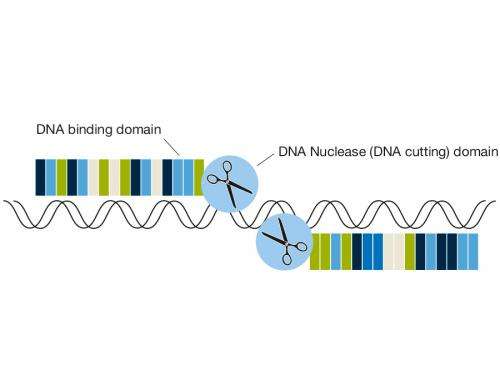Fast track to mouse modeling

What genes are responsible for the development of breast cancer? What are the brain cell mutations that lead to the onset of Alzheimer's? To find new therapies, scientists have to understand how diseases are triggered at cell level. Experiments on genetically modified mice are an indispensable part of basic medical research. Now a method has been found to help laboratories carry out their work with fewer test animals.
Scientists use genetically modified laboratory mice to investigate the underlying mechanisms of diseases. These "knockout" mice carry genes or gene regions that are thought to trigger diseases.
For laboratories, the knockout technique requires a lot of time and effort. "Scientists start by engineering a genetic defect into embryonic stem cells," explains Prof. Wolfgang Wurst, who carries out research at Technische Universität München (TUM) and Helmholtz Zentrum München. "Then they implant the manipulated stem cells into a mouse embryo."
Genetic defects made to order
After multiple steps, organisms are created which have both modified and unmodified cells. The mice have to be crossed several times until offspring are produced which carry the knockout characteristic in all of their body cells. Including all tests, it takes scientists between one and two years to produce a functioning mouse model.
But now the team led by Prof. Wurst and Dr. Ralf Kühn have developed a new method, allowing them to complete the process in a much shorter time – just a little over four months. They modified the genes directly in the fertilized mouse egg cells so that all the cells in the bodies of the offspring would have the same genetic defect. "By eliminating the time-consuming crossing stage, laboratories will be able to produce mouse models much quicker and with much fewer test animals," remarks Wurst.
High-precision cutting of DNA strands
The team used TALEN enzymes (TALEN: Transcription activator-like effector nuclease) for its research experiments. These DNA tools have a dual function: One part recognizes and binds to a particular gene, while another cuts the DNA strand in situ. These ultra-precise DNA "scalpels" were developed just a few years ago.
"TALEN enzymes have a simple, modular structure," says Wurst. "This means that we can create a number of variants to cut through all genes in the genome and modify them for a specific purpose." The technique will allow scientists to knock out particular genes, introduce genetic defects within cells and repair genetic defects.
"We have used the TALEN process to implant mutations associated with human dementia in mouse germ cells. These animal models will help us understand the molecular mechanisms behind dementia. The advantage of the technique is that we will in principle be able to model all hereditary diseases in the test mice," adds Wurst.
More information: Direct production of mouse disease models by embryo microinjection of TALENs and oligodeoxynucleotides; Benedikt Wefers, Melanie Meyer, Oskar Ortizk Martin Hrabé de Angelis, Jens Hansen, Wolfgang Wurst and Ralf Kühn, PNAS, www.pnas.org/content/110/10/3782
Journal information: Proceedings of the National Academy of Sciences
Provided by Technical University Munich



















